Abstract
1. Spatial and temporal contrast sensitivities were investigated in two subjects whose photopic vision has been previously shown to be subserved by only short wavelength cones. 2. Spatial contrast sensitivity was uniformly reduced compared with that of the normal trichromatic observer. Peak contrast sensitivity reached 40 which is a factor of 2-3 better than previous estimates and extrapolated acuity was around 15 cycles deg-1. Central, non-aliased grating acuity was between 6-9 cycles deg-1. This declined with eccentricity such that at 20 deg it was around 1 cycle deg-1. 3. The variation in contrast sensitivity across the visual field was measured for a range of different spatial frequencies. It was found to be of the same form as that for the normal trichromat but reduced in overall sensitivity. 4. Temporal contrast sensitivity was measured for two different spatial frequencies and found to exhibit the spatio-temporal covariation which is typical of normal trichromatic vision. Temporal acuity exhibited a strong dependence on illuminance and reached asymptotic values of around 40-45 Hz. While this is more than a factor of two above most previous estimates for the short wavelength receptors of normal vision it agrees with some more recent estimates obtained using a different technique. Temporal resolution was found to be evenly distributed across the visual field. 5. Similarities were found between the post-receptoral properties of these achromats and the properties of the isolated blue mechanism of normal vision and also the properties of normal luminance contrast processing in general. The present results provide an upper bound on the contribution of the short wavelength mechanism to normal vision and also provide a suitable model of its possible contribution to the processing of luminance contrast in the normal visual system.
Full text
PDF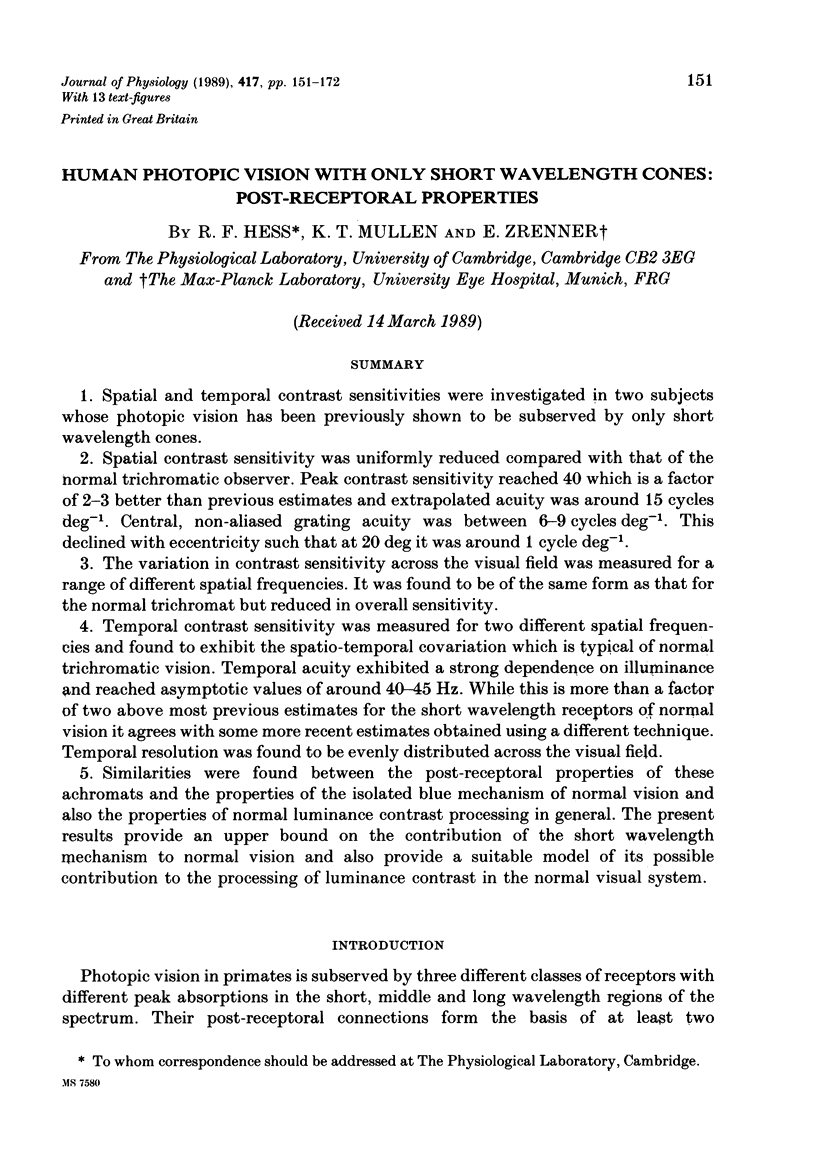
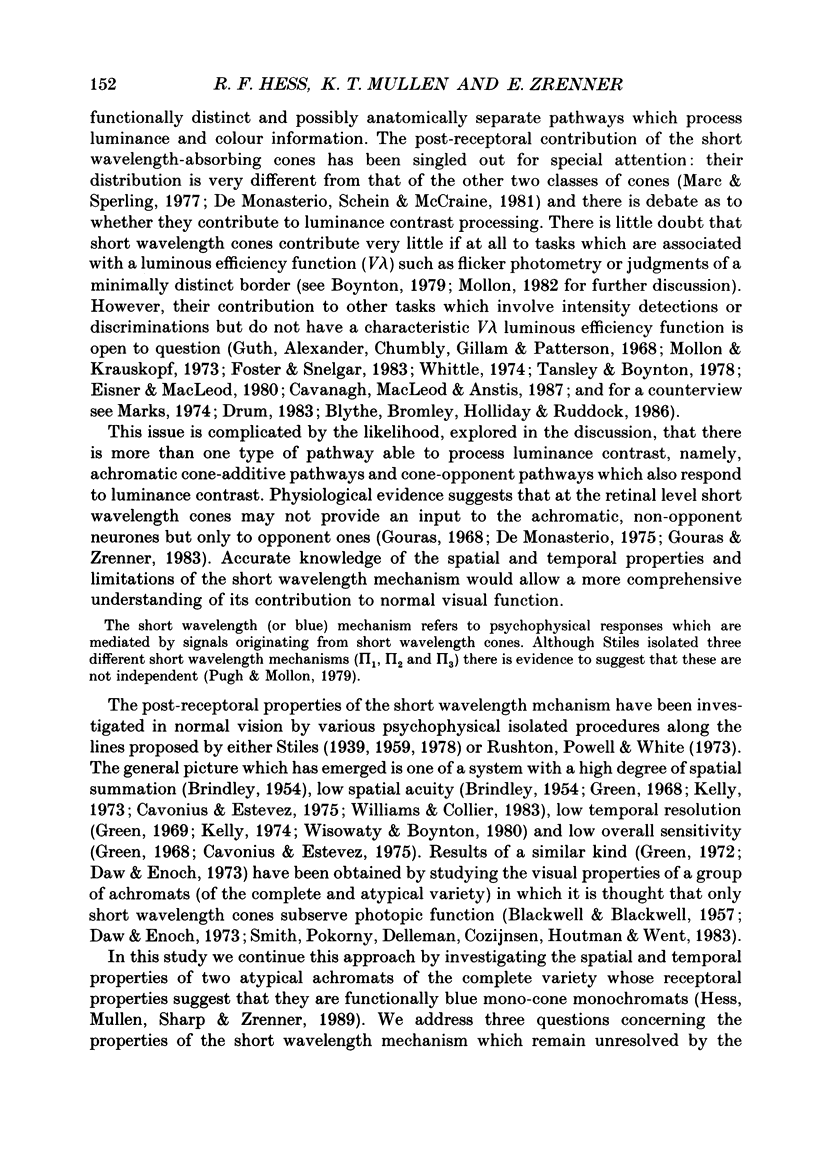
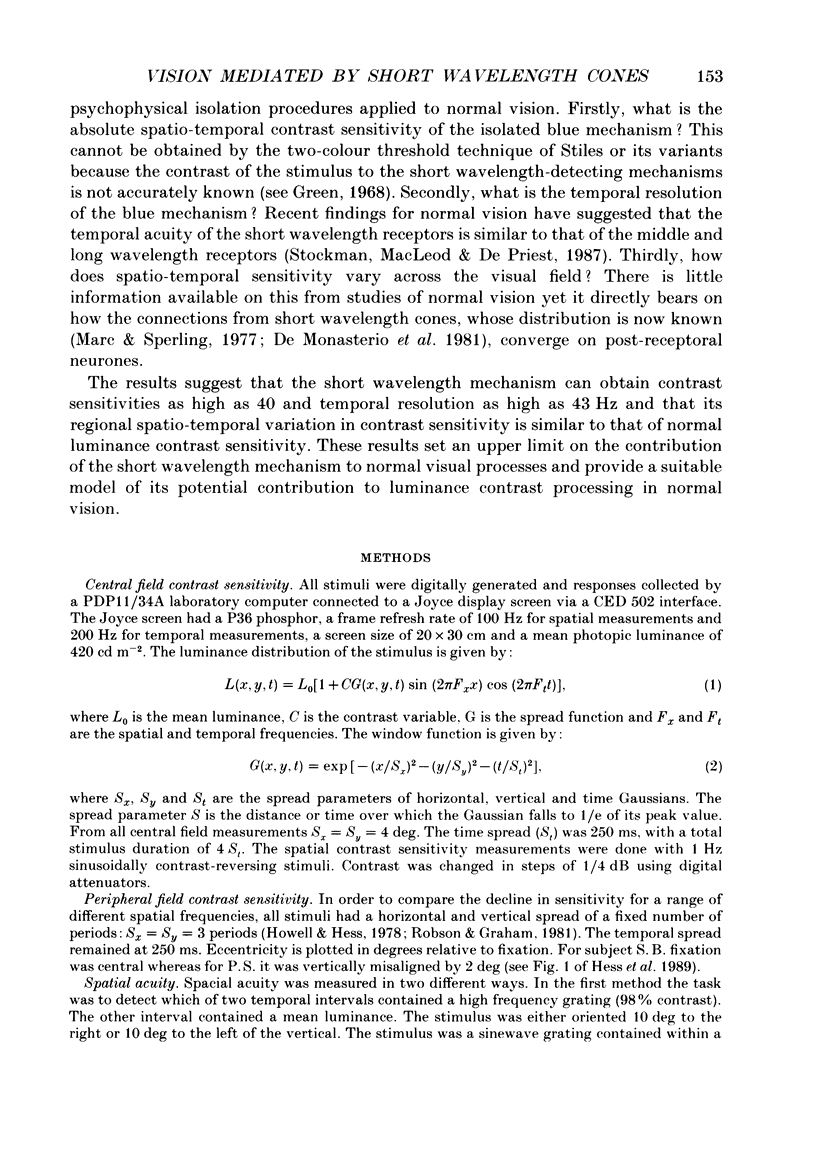
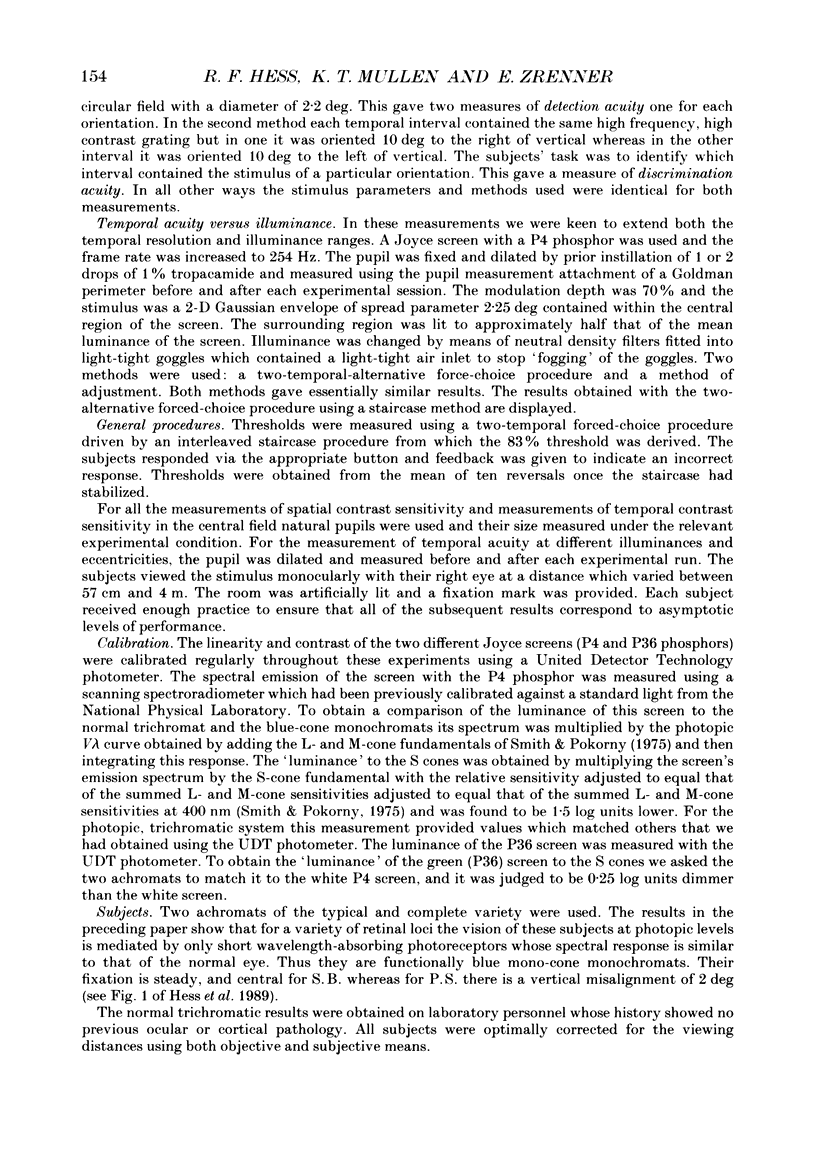
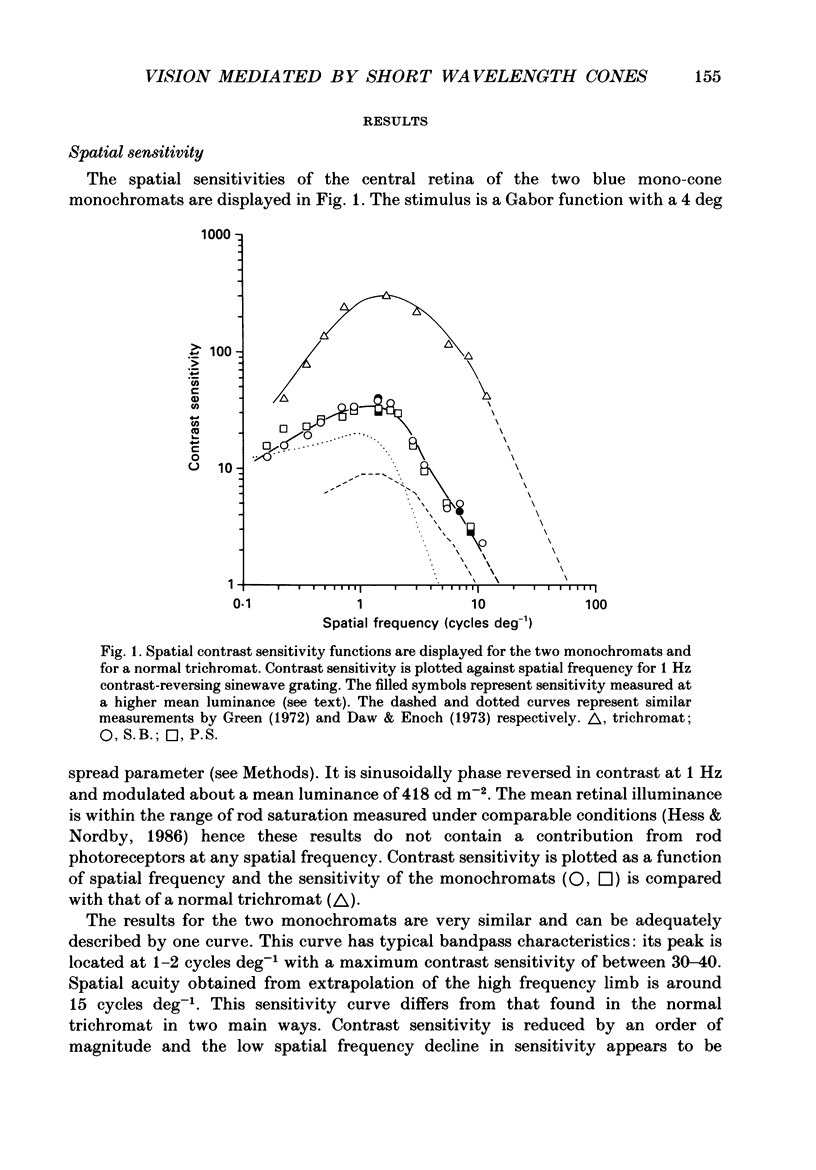
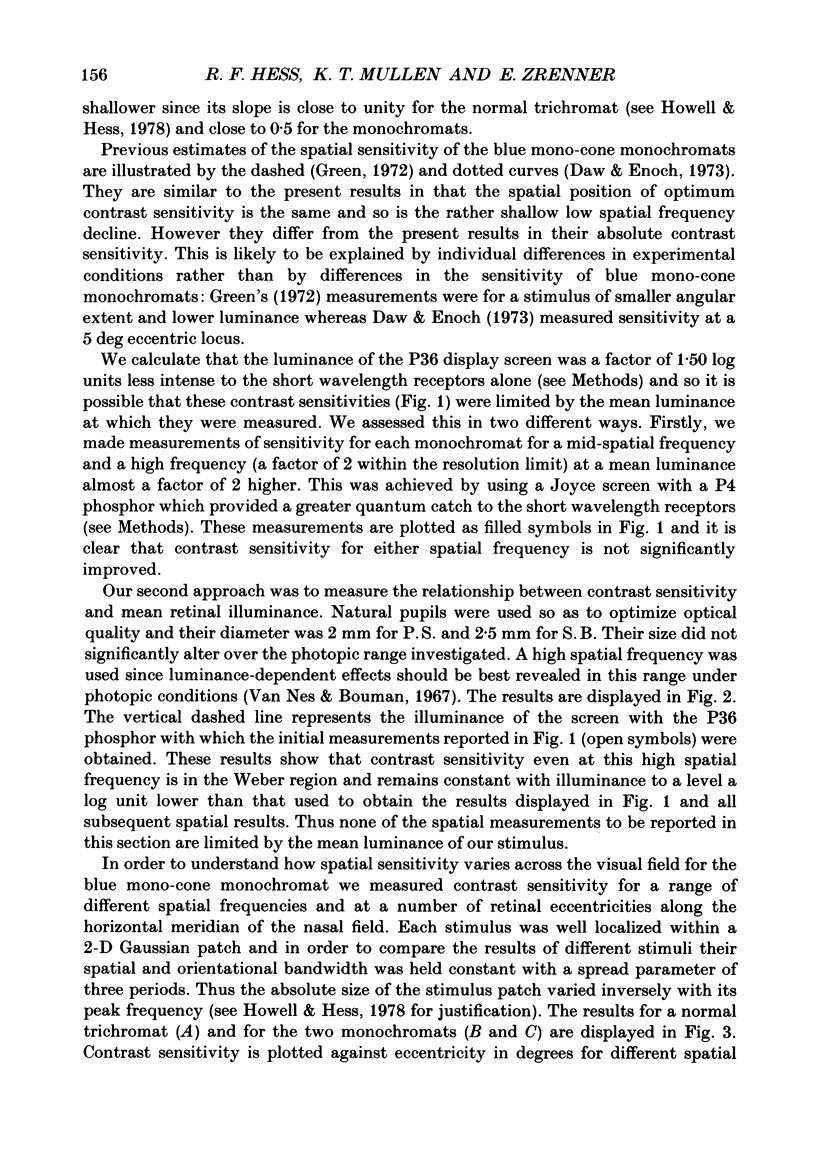
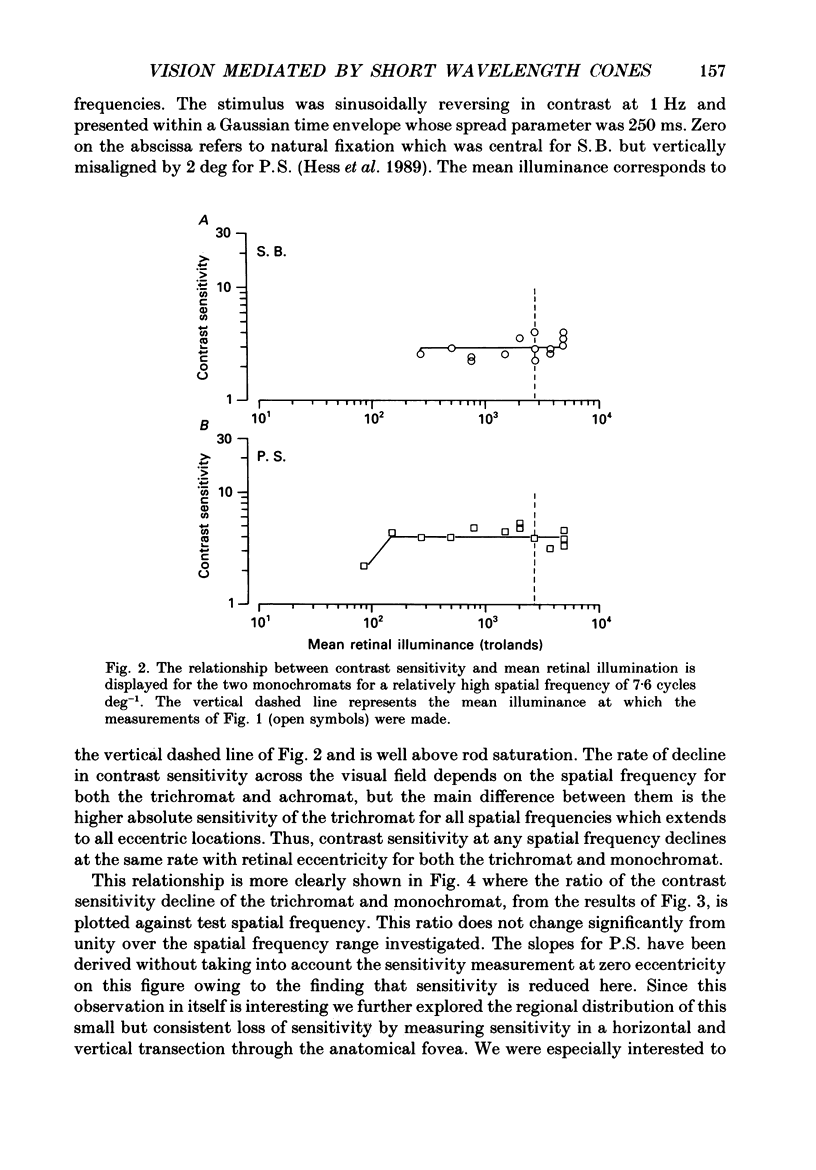
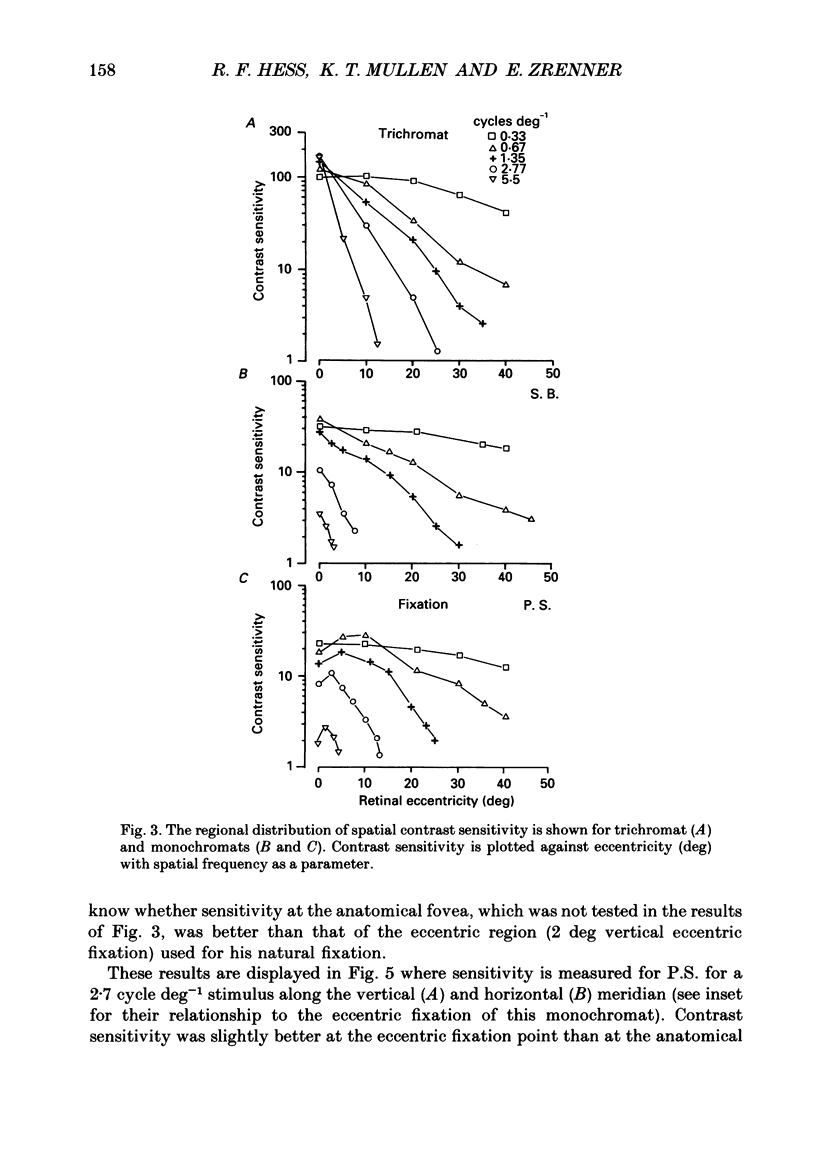
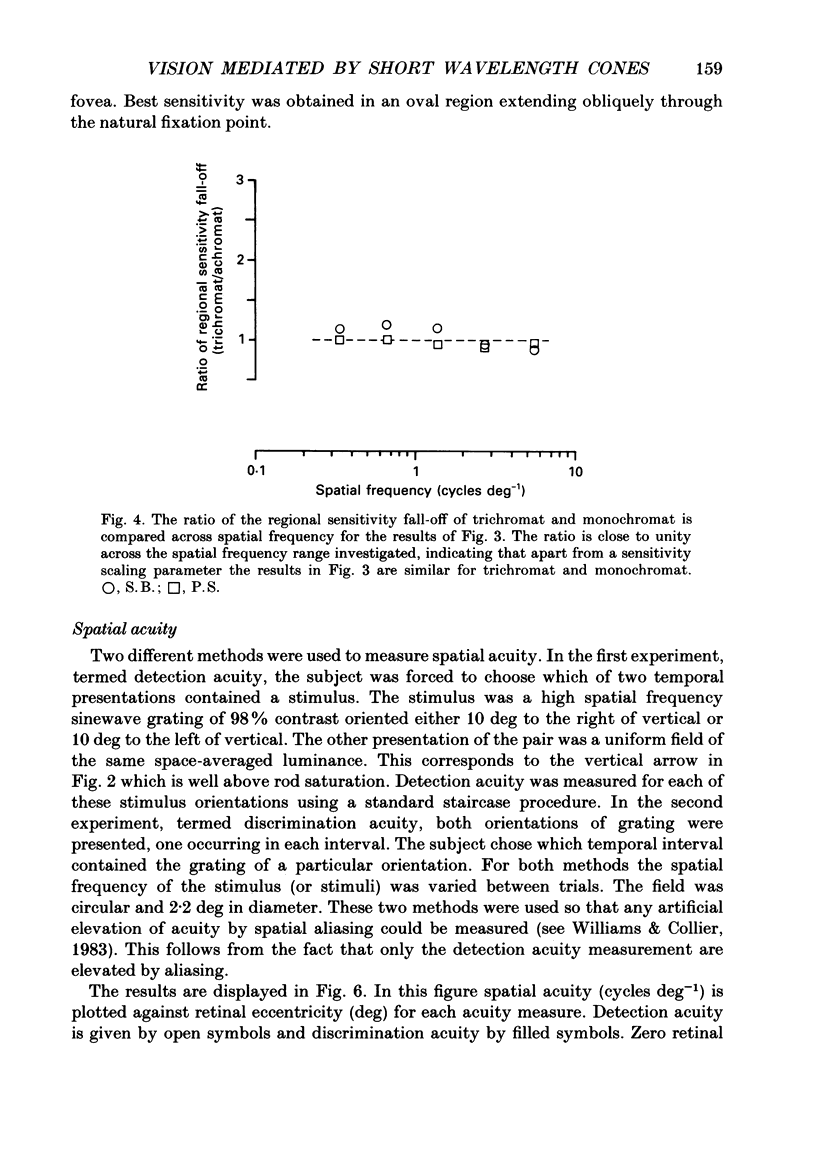
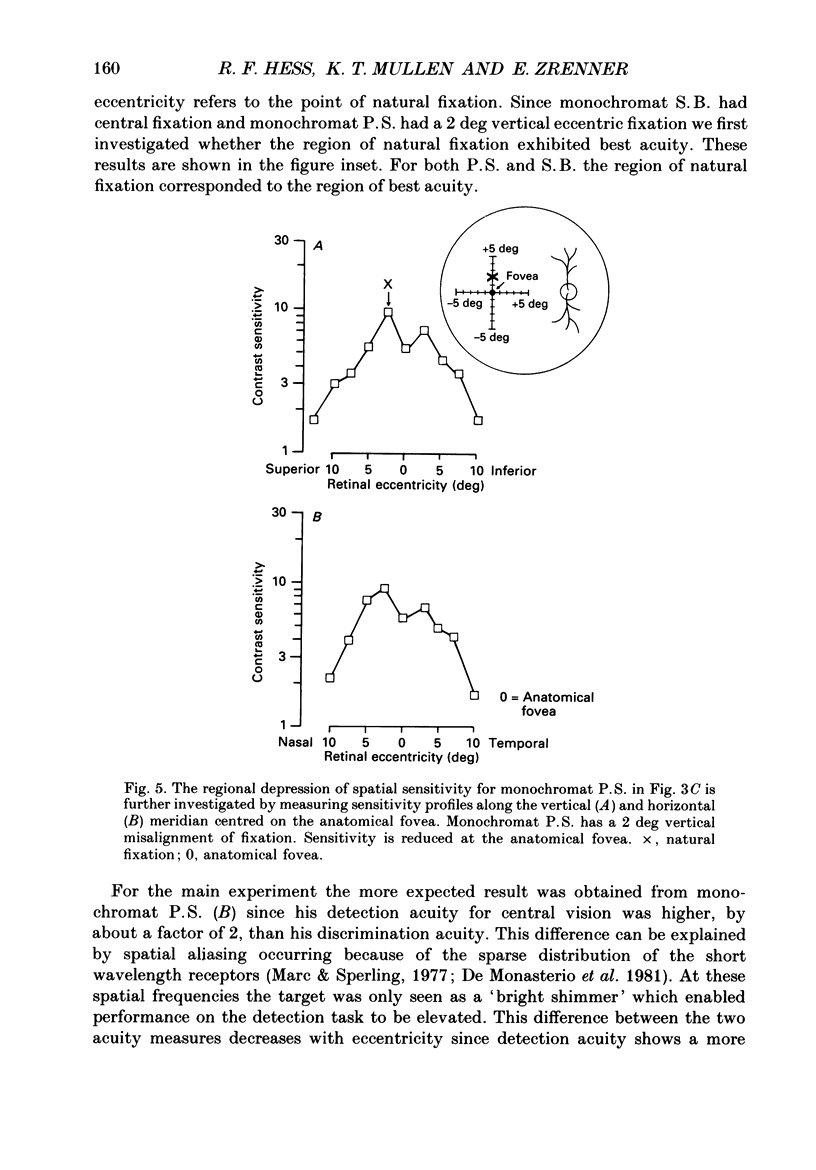
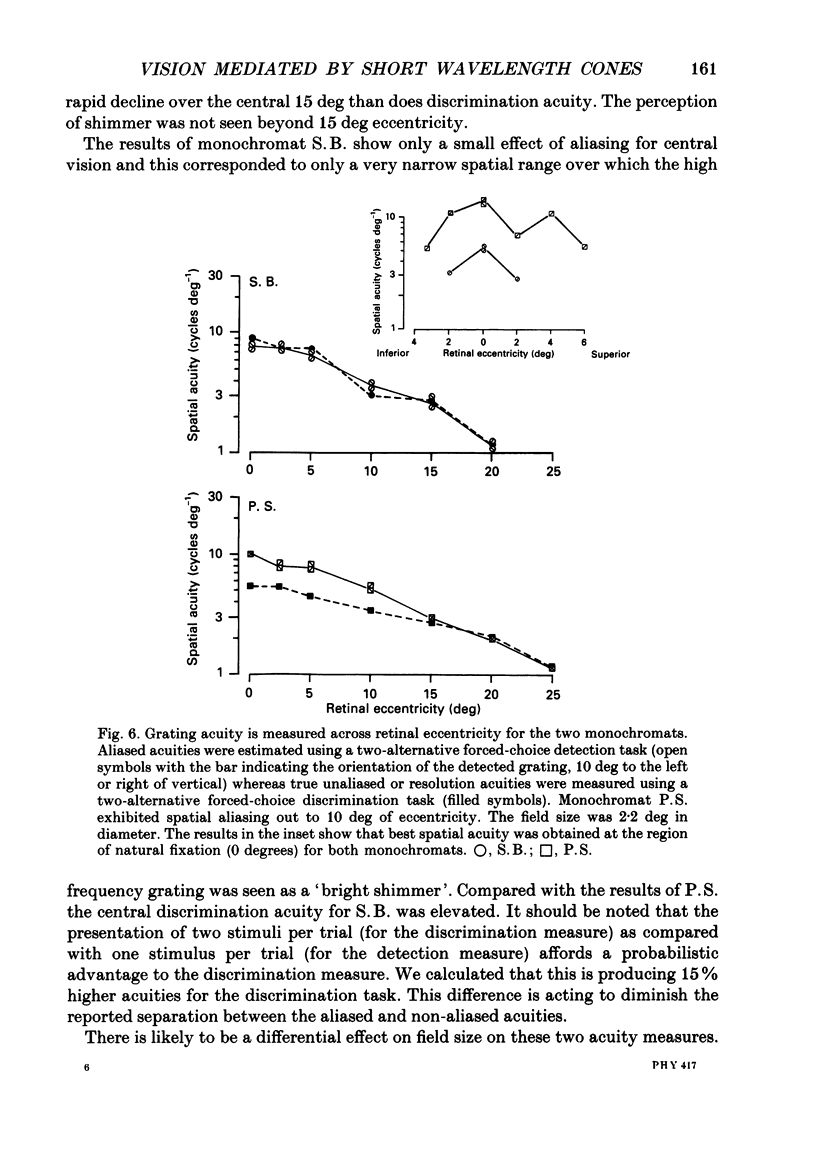
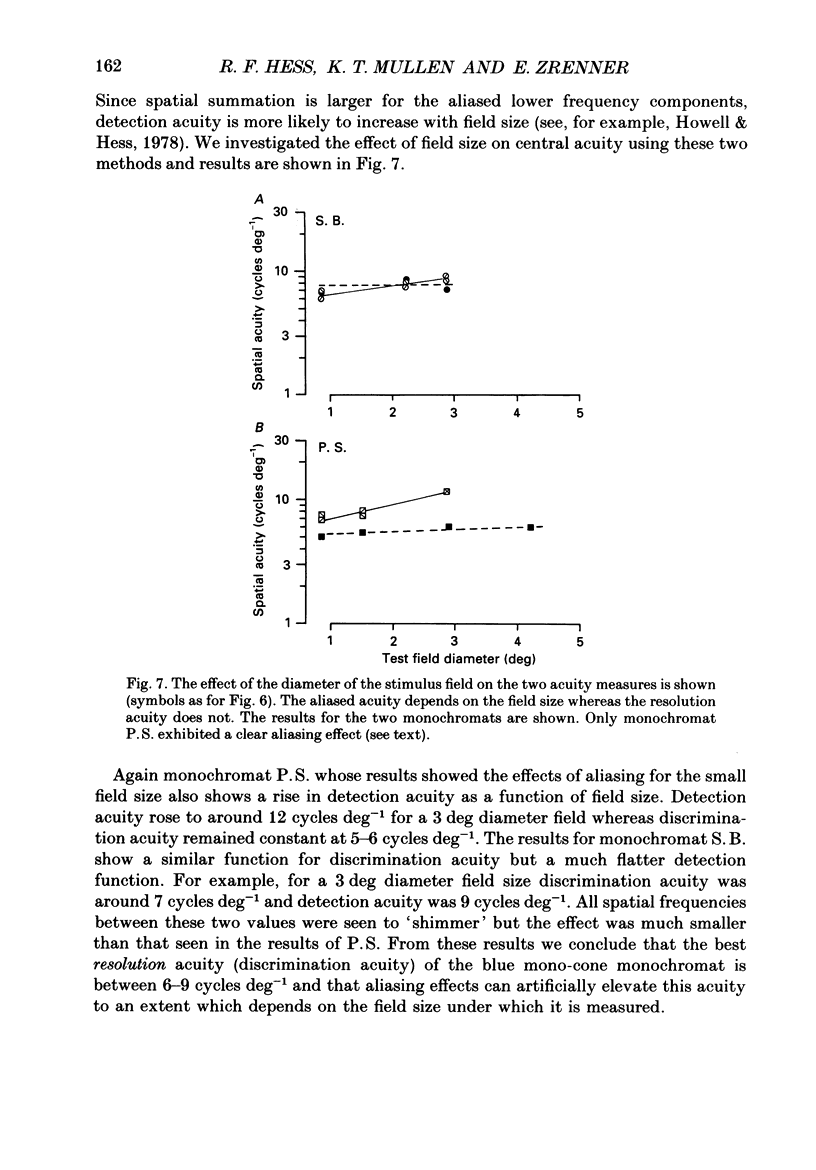
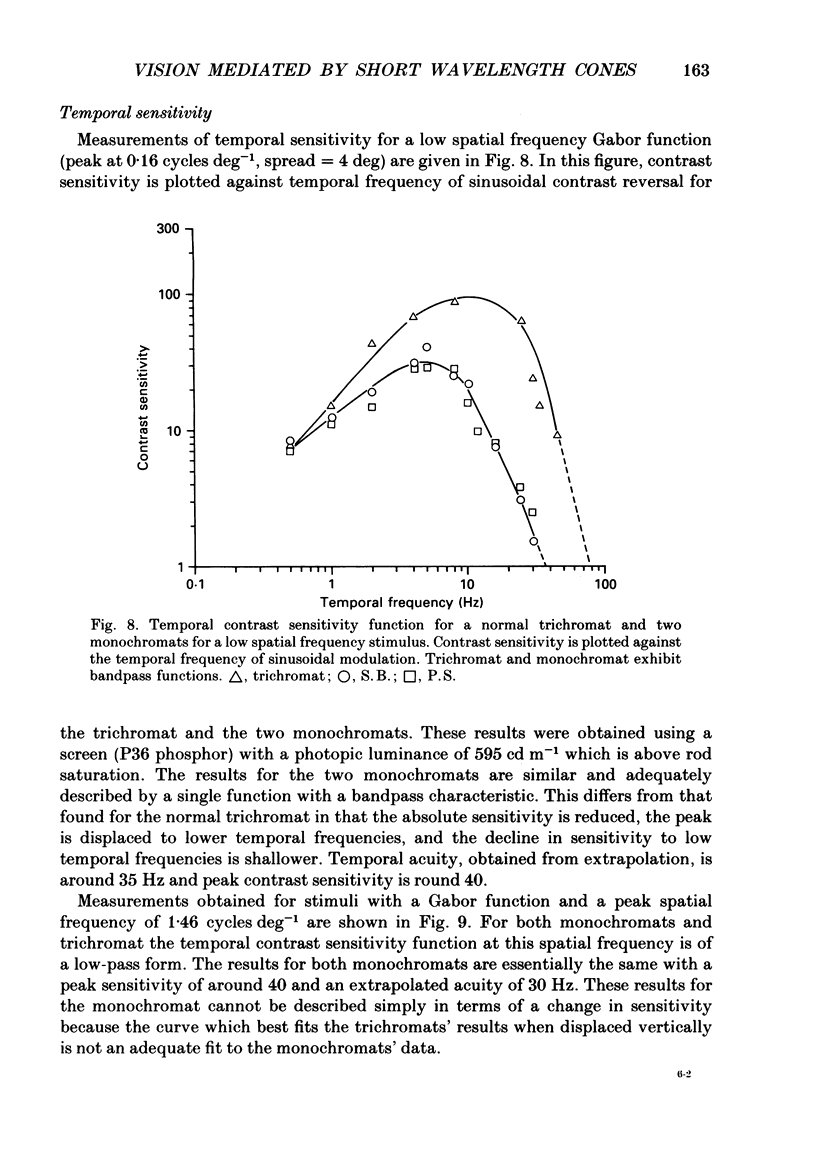
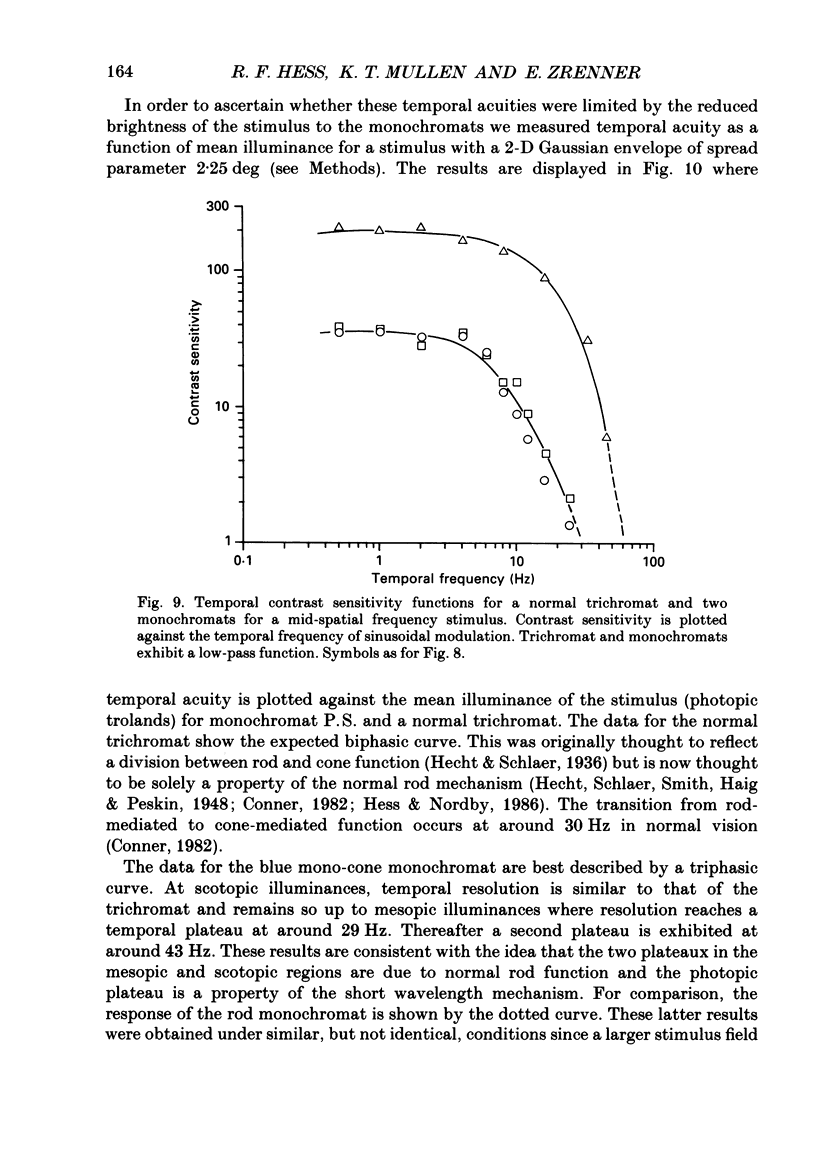
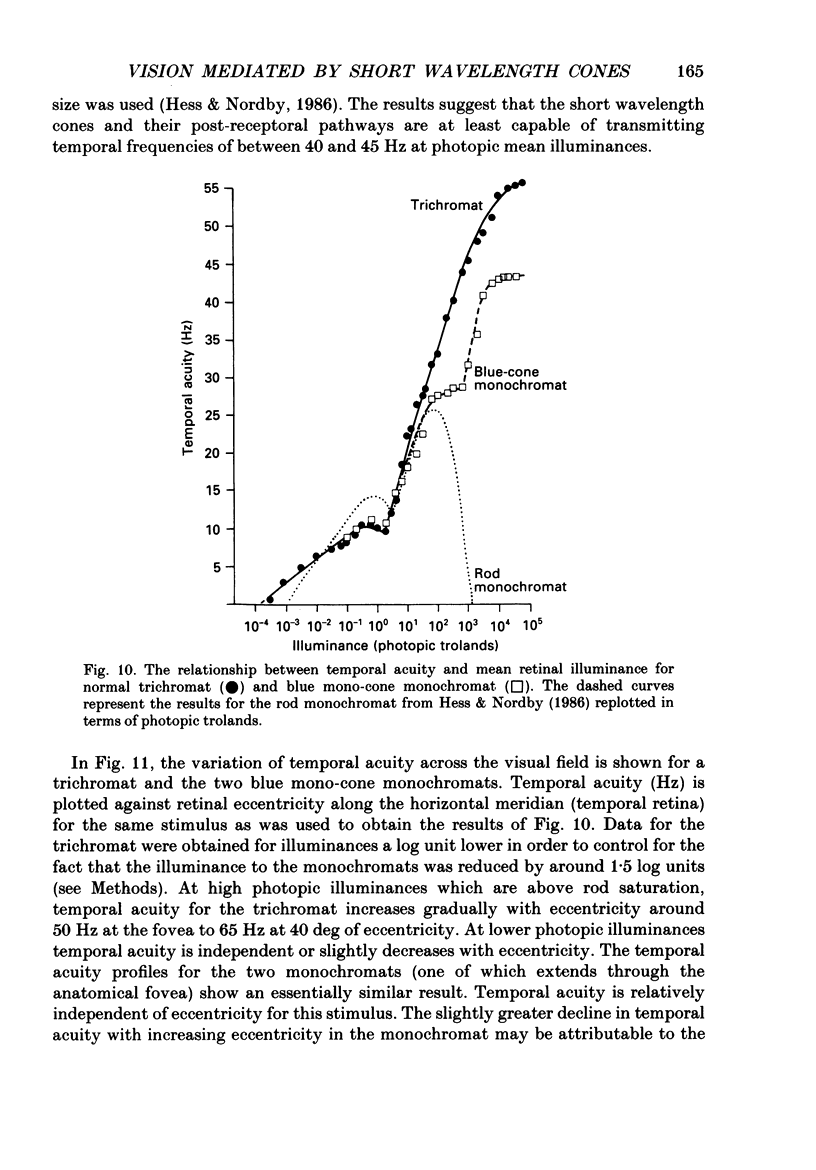
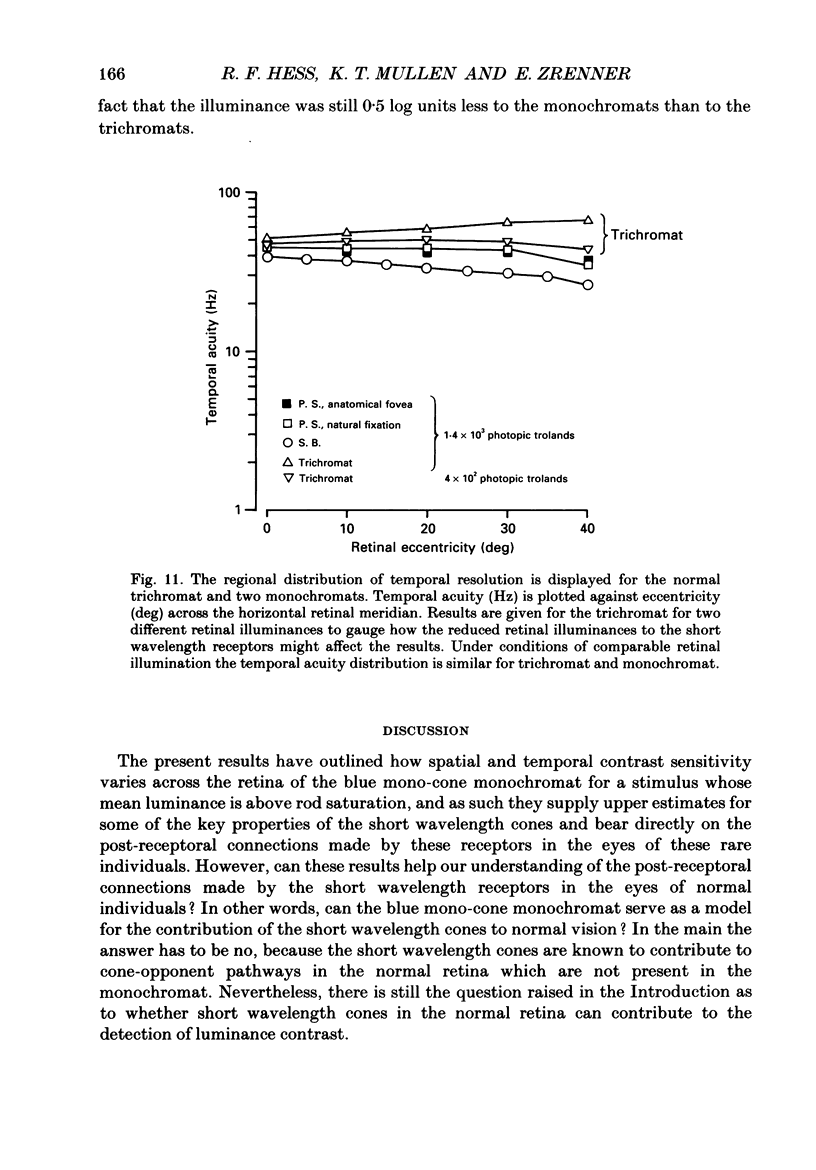
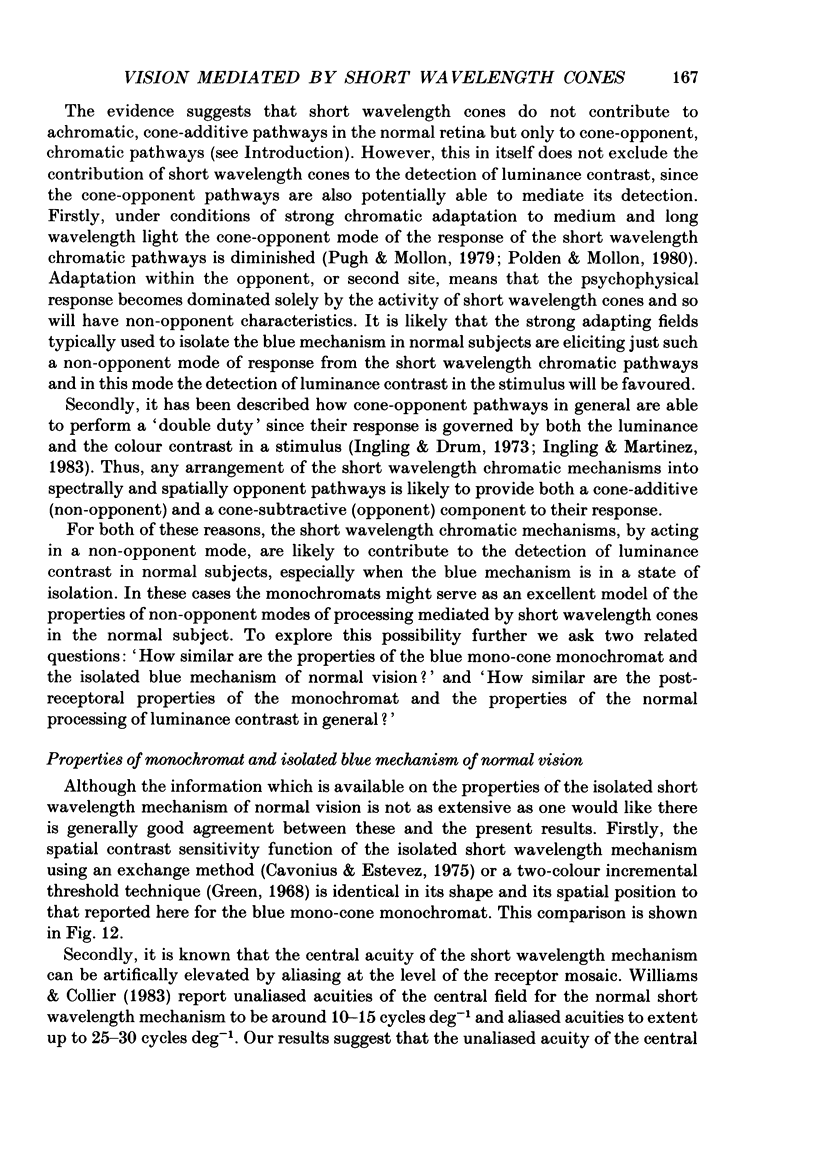
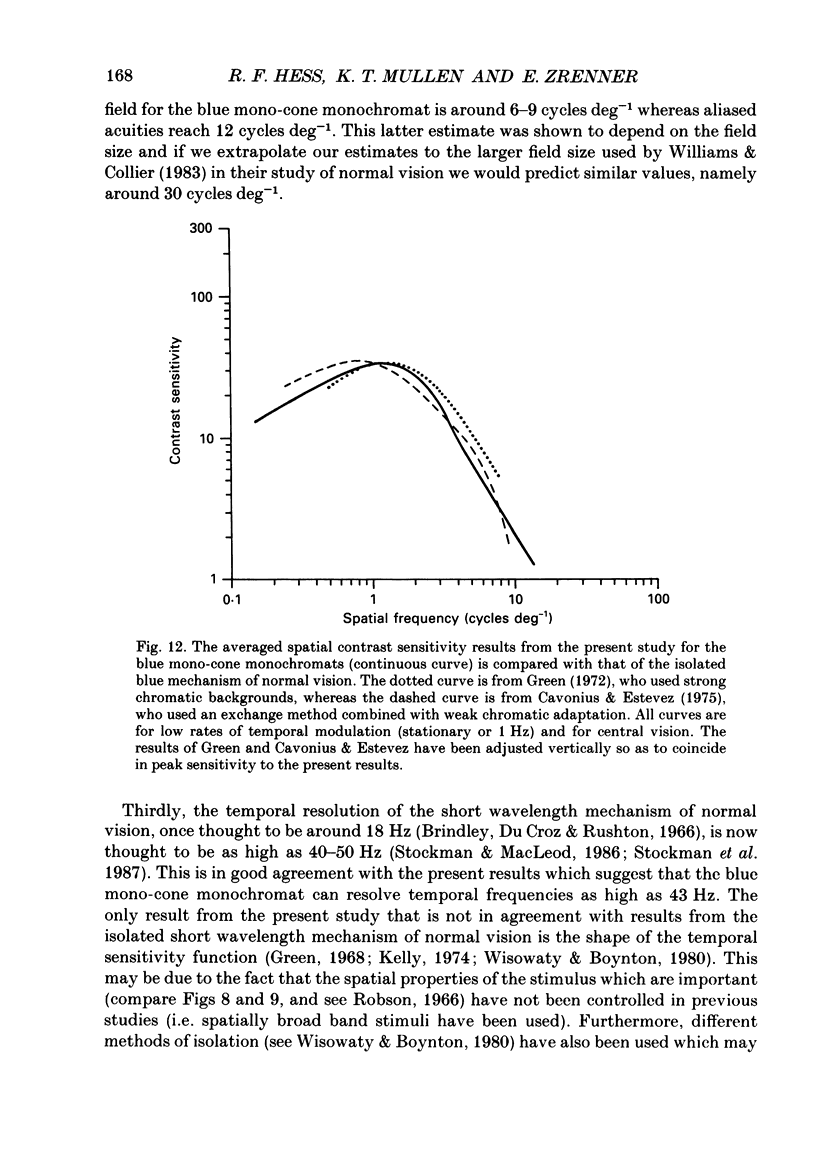
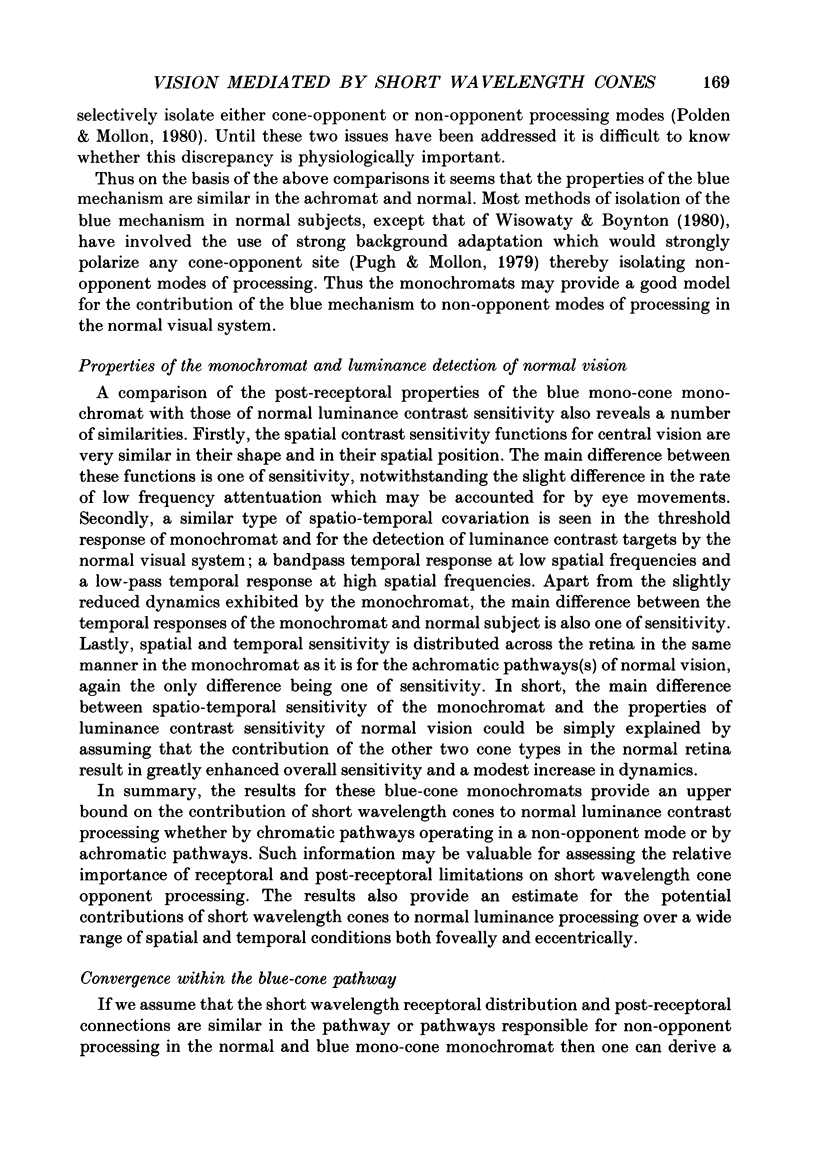
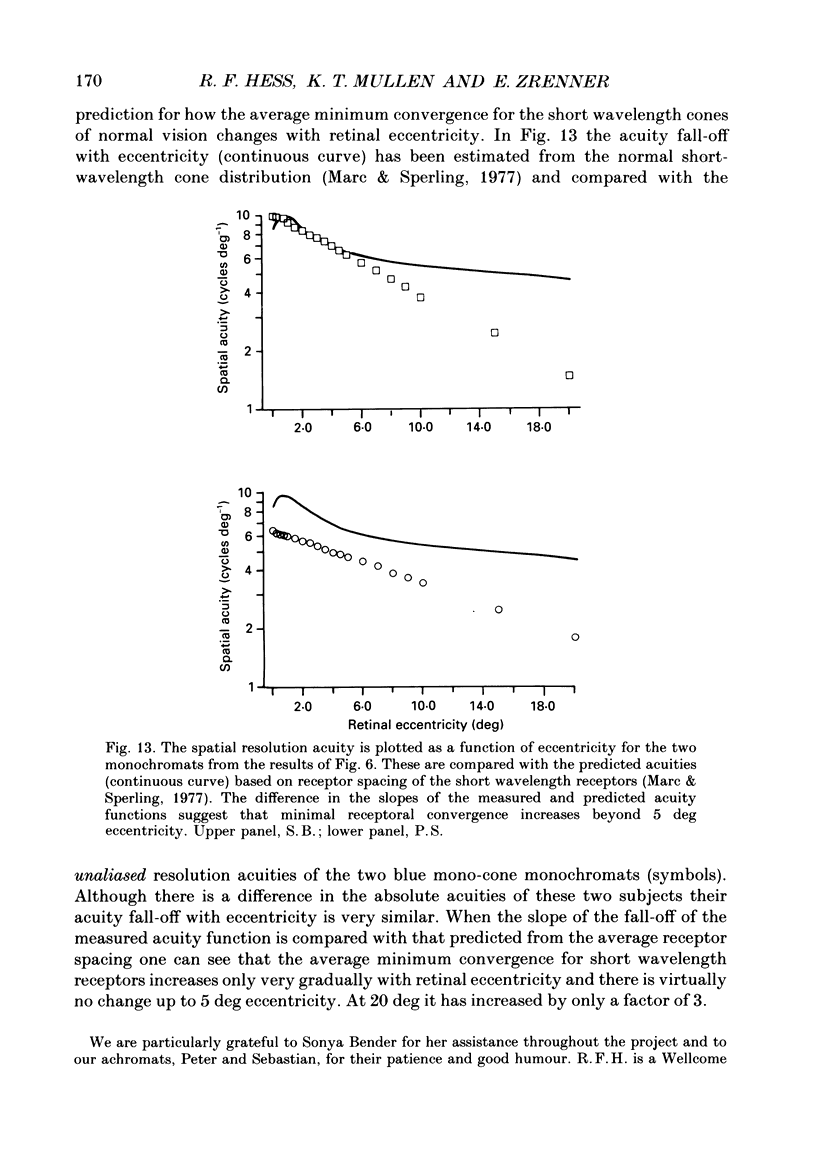
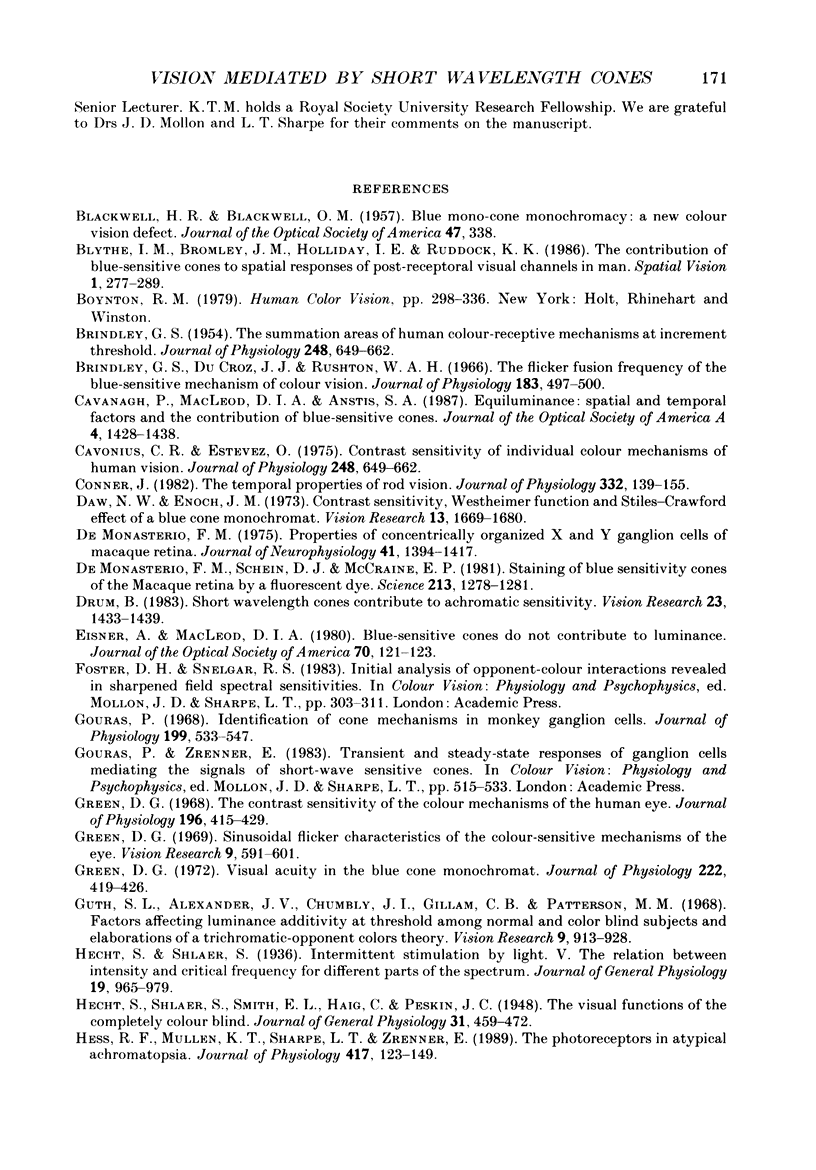
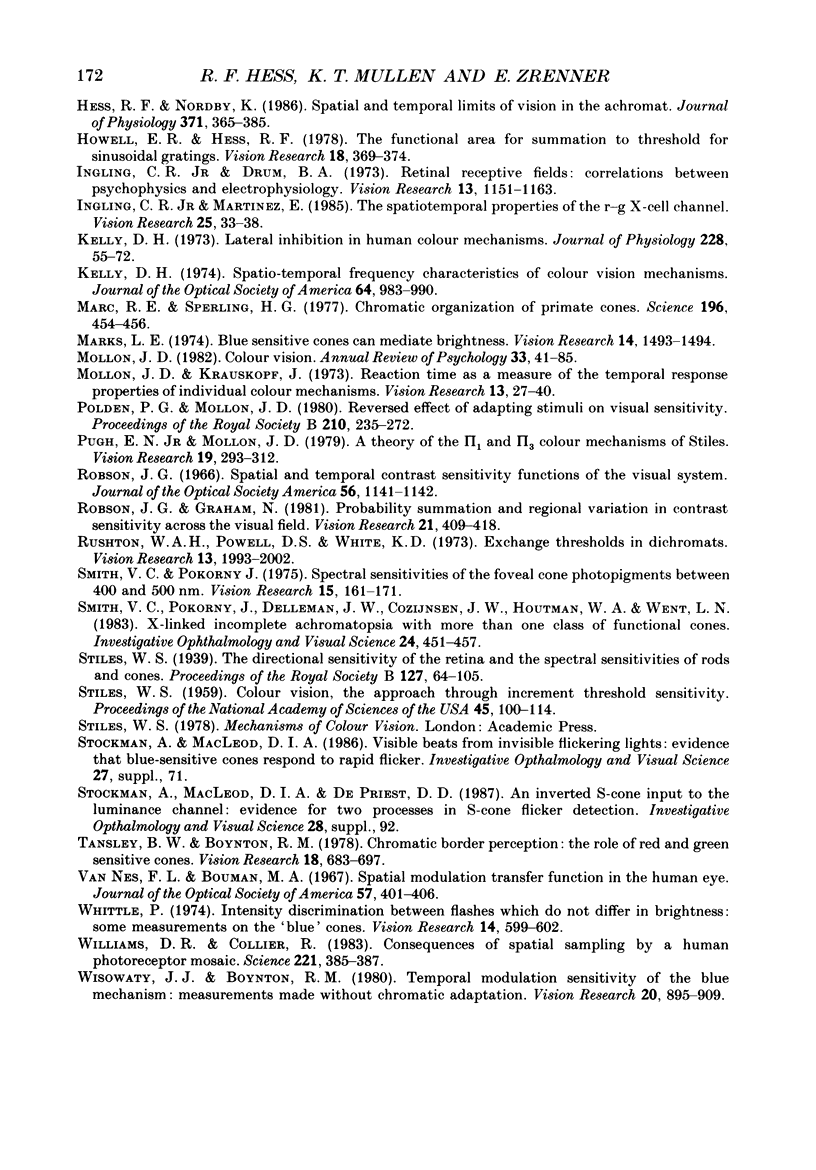
Selected References
These references are in PubMed. This may not be the complete list of references from this article.
- Blythe I. M., Bromley J. M., Holliday I. E., Ruddock K. H. The contribution of blue-sensitive cones to spatial responses of post-receptoral visual channels in man. Spat Vis. 1986;1(4):277–289. doi: 10.1163/156856886x00089. [DOI] [PubMed] [Google Scholar]
- Brindley G. S., Du Croz J. J., Rushton W. A. The flicker fusion frequency of the blue-sensitive mechanism of colour vision. J Physiol. 1966 Mar;183(2):497–500. doi: 10.1113/jphysiol.1966.sp007879. [DOI] [PMC free article] [PubMed] [Google Scholar]
- Cavanagh P., MacLeod D. I., Anstis S. M. Equiluminance: spatial and temporal factors and the contribution of blue-sensitive cones. J Opt Soc Am A. 1987 Aug;4(8):1428–1438. doi: 10.1364/josaa.4.001428. [DOI] [PubMed] [Google Scholar]
- Cavonius C. R., Estévez O. Contrast sensitivity of individual colour mechanisms of human vision. J Physiol. 1975 Jul;248(3):649–662. doi: 10.1113/jphysiol.1975.sp010994. [DOI] [PMC free article] [PubMed] [Google Scholar]
- Conner J. D. The temporal properties of rod vision. J Physiol. 1982 Nov;332:139–155. doi: 10.1113/jphysiol.1982.sp014406. [DOI] [PMC free article] [PubMed] [Google Scholar]
- Daw N. W., Enoch J. M. Contrast sensitivity, Westheimer function and Stiles-Crawford effect in a blue cone monochromat. Vision Res. 1973 Sep;13(9):1669–1680. doi: 10.1016/0042-6989(73)90086-2. [DOI] [PubMed] [Google Scholar]
- DeMonasterio F. M., Schein S. J., McCrane E. P. Staining of blue-sensitive cones of the macaque retina by a fluorescent dye. Science. 1981 Sep 11;213(4513):1278–1281. doi: 10.1126/science.7268439. [DOI] [PubMed] [Google Scholar]
- Drum B. Short-wavelength cones contribute to achromatic sensitivity. Vision Res. 1983;23(12):1433–1439. doi: 10.1016/0042-6989(83)90155-4. [DOI] [PubMed] [Google Scholar]
- Eisner A., MacLeod D. I. Blue-sensitive cones do not contribute to luminance. J Opt Soc Am. 1980 Jan;70(1):121–123. doi: 10.1364/josa.70.000121. [DOI] [PubMed] [Google Scholar]
- Gouras P. Identification of cone mechanisms in monkey ganglion cells. J Physiol. 1968 Dec;199(3):533–547. doi: 10.1113/jphysiol.1968.sp008667. [DOI] [PMC free article] [PubMed] [Google Scholar]
- Green D. G. Sinusoidal flicker characteristics of the color-sensitive mechanisms of the eye. Vision Res. 1969 May;9(5):591–601. doi: 10.1016/0042-6989(69)90021-2. [DOI] [PubMed] [Google Scholar]
- Green D. G. The contrast sensitivity of the colour mechanisms of the human eye. J Physiol. 1968 May;196(2):415–429. doi: 10.1113/jphysiol.1968.sp008515. [DOI] [PMC free article] [PubMed] [Google Scholar]
- Green D. G. Visual acuity in the blue cone monochromat. J Physiol. 1972 Apr;222(2):419–426. doi: 10.1113/jphysiol.1972.sp009806. [DOI] [PMC free article] [PubMed] [Google Scholar]
- Guth S. L., Alexander J. V., Chumbly J. I., Gillman C. B., Patterson M. M. Factors affecting luminance additivity at threshold among normal and color-blind subjects and elaborations of a trichromatic-opponent colors theory. Vision Res. 1968 Jul;8(7):913–928. doi: 10.1016/0042-6989(68)90140-5. [DOI] [PubMed] [Google Scholar]
- Hess R. F., Mullen K. T., Sharpe L. T., Zrenner E. The photoreceptors in atypical achromatopsia. J Physiol. 1989 Oct;417:123–149. doi: 10.1113/jphysiol.1989.sp017794. [DOI] [PMC free article] [PubMed] [Google Scholar]
- Hess R. F., Nordby K. Spatial and temporal limits of vision in the achromat. J Physiol. 1986 Feb;371:365–385. doi: 10.1113/jphysiol.1986.sp015981. [DOI] [PMC free article] [PubMed] [Google Scholar]
- Howell E. R., Hess R. F. The functional area for summation to threshold for sinusoidal gratings. Vision Res. 1978;18(4):369–374. doi: 10.1016/0042-6989(78)90045-7. [DOI] [PubMed] [Google Scholar]
- Ingling C. R., Jr, Drum B. A. Retinal receptive fields: correlations between psychophysics and electrophysiology. Vision Res. 1973 Jun;13(6):1151–1163. doi: 10.1016/0042-6989(73)90150-8. [DOI] [PubMed] [Google Scholar]
- Ingling C. R., Jr, Martinez-Uriegas E. The spatiotemporal properties of the r-g X-cell channel. Vision Res. 1985;25(1):33–38. doi: 10.1016/0042-6989(85)90077-x. [DOI] [PubMed] [Google Scholar]
- Kelley D. H. Spatio-temporal frequency chracteristics of color-vision mechanisms. J Opt Soc Am. 1974 Jul;64(7):983–990. doi: 10.1364/josa.64.000983. [DOI] [PubMed] [Google Scholar]
- Kelly D. H. Lateral inhibition in human colour mechanisms. J Physiol. 1973 Jan;228(1):55–72. doi: 10.1113/jphysiol.1973.sp010072. [DOI] [PMC free article] [PubMed] [Google Scholar]
- Letter: Blue-sensitive cones can mediate brightness. Vision Res. 1974 Dec;14(12):1493–1496. doi: 10.1016/0042-6989(74)90029-7. [DOI] [PubMed] [Google Scholar]
- Marc R. E., Sperling H. G. Chromatic organization of primate cones. Science. 1977 Apr 22;196(4288):454–456. doi: 10.1126/science.403607. [DOI] [PubMed] [Google Scholar]
- Mollon J. D., Krauskopf J. Reaction time as a measure of the temporal response properties of individua colour mechanisms. Vision Res. 1973 Jan;13(1):27–40. doi: 10.1016/0042-6989(73)90162-4. [DOI] [PubMed] [Google Scholar]
- Polden P. G., Mollon J. D. Reversed effect of adapting stimuli on visual sensitivity. Proc R Soc Lond B Biol Sci. 1980 Nov 19;210(1179):235–272. doi: 10.1098/rspb.1980.0131. [DOI] [PubMed] [Google Scholar]
- Pugh E. N., Jr, Mollon J. D. A theory of the pi1 and pi3 color mechanisms of Stiles. Vision Res. 1979;19(3):293–312. doi: 10.1016/0042-6989(79)90175-5. [DOI] [PubMed] [Google Scholar]
- Robson J. G., Graham N. Probability summation and regional variation in contrast sensitivity across the visual field. Vision Res. 1981;21(3):409–418. doi: 10.1016/0042-6989(81)90169-3. [DOI] [PubMed] [Google Scholar]
- Rushton W. A., Powell D. S., White K. D. Exchange thresholds in dichromats. Vision Res. 1973 Nov;13(11):1993–2002. doi: 10.1016/0042-6989(73)90177-6. [DOI] [PubMed] [Google Scholar]
- Smith V. C., Pokorny J., Delleman J. W., Cozijnsen M., Houtman W. A., Went L. N. X-linked incomplete achromatopsia with more than one class of functional cones. Invest Ophthalmol Vis Sci. 1983 Apr;24(4):451–457. [PubMed] [Google Scholar]
- Smith V. C., Pokorny J. Spectral sensitivity of the foveal cone photopigments between 400 and 500 nm. Vision Res. 1975 Feb;15(2):161–171. doi: 10.1016/0042-6989(75)90203-5. [DOI] [PubMed] [Google Scholar]
- Tansley B. W., Boynton R. M. Chromatic border perception: the role of red- and green-sensitive cones. Vision Res. 1978;18(6):683–697. doi: 10.1016/0042-6989(78)90147-5. [DOI] [PubMed] [Google Scholar]
- Whittle P. Letter: Intensity discrimination between flashes which do not differ in brightness: some new measurements on the "blue" cones. Vision Res. 1974 Jul;14(7):599–601. doi: 10.1016/0042-6989(74)90052-2. [DOI] [PubMed] [Google Scholar]
- Williams D. R., Collier R. Consequences of spatial sampling by a human photoreceptor mosaic. Science. 1983 Jul 22;221(4608):385–387. doi: 10.1126/science.6867717. [DOI] [PubMed] [Google Scholar]
- Wisowaty J. J., Boynton R. M. Temporal modulation sensitivity of the blue mechanism: measurements made without chromatic adaptation. Vision Res. 1980;20(11):895–909. doi: 10.1016/0042-6989(80)90071-1. [DOI] [PubMed] [Google Scholar]
- de Monasterio F. M. Properties of concentrically organized X and Y ganglion cells of macaque retina. J Neurophysiol. 1978 Nov;41(6):1394–1417. doi: 10.1152/jn.1978.41.6.1394. [DOI] [PubMed] [Google Scholar]


